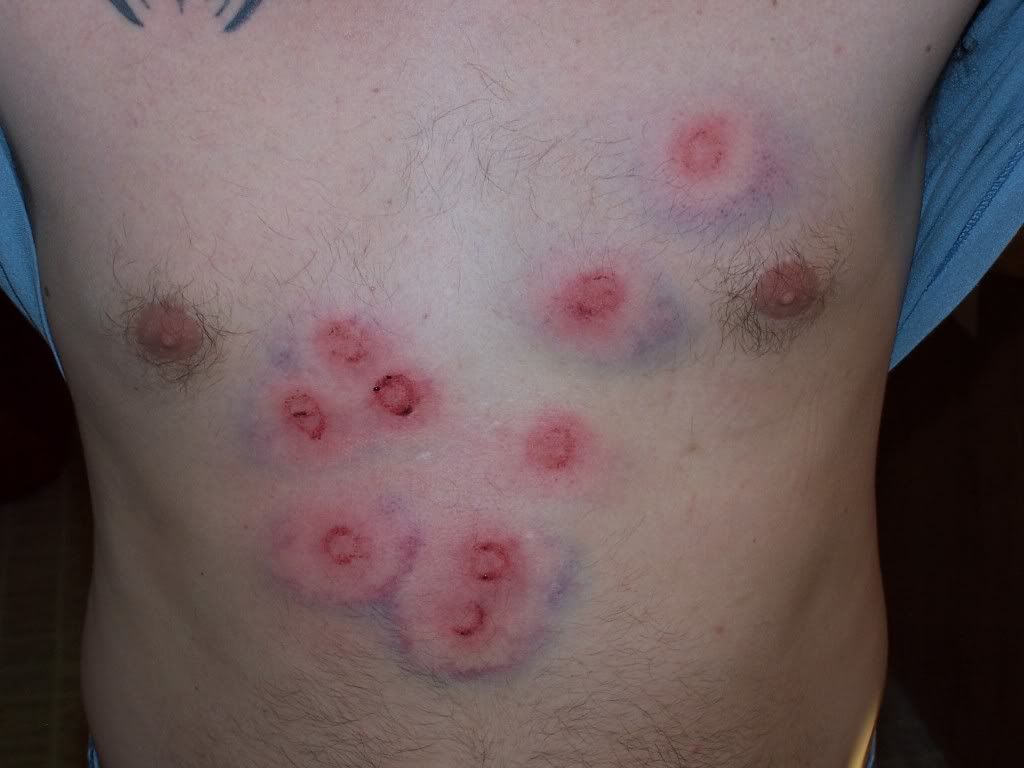This below was found posted (copied and paste here) on the Army Safety Center Website.
"Hot Brass
in the Summertime
“Put the weapon down and step away!” You usually only hear that phrase on television cop shows late at night, and if you hear it in real life, you’re probably in big trouble. But these words don’t apply only to criminal situations. Many a negligent discharge might’ve been prevented if someone had spoken up when they saw a comrade acting in an unexpected or less-than-safe manner. Such was the case in a recent negligent discharge accident.
After 30-odd pages of analysis, the local and centralized accident investigation boards came up with a recommendation for live fire ranges. When something unsafe or unexpected happens on the range, the person(s) involved should put the weapon down and step back before doing anything else. The chance for error and a negligent discharge is greatly reduced when the most dangerous object around is removed from human hands.
Before this particular accident, some Soldiers and Air Force members were training perimeter defense techniques. Two Airmen situated side by side fired their M16s over a wall at moving targets downrange. Hot brass from the left Airman’s weapon landed on the other Airman’s neck and rolled down his back. The burned Airman jerked his left hand up and pivoted his body to the left as he tried to brush away the scorching metal. However, his rifle was still in his right hand, and he didn’t remove his finger from the trigger as he turned toward the other Airman. The M16 slipped off the table support, and its falling weight applied pressure to the burned Airman’s trigger finger, causing the weapon to fire and hit the Airman to the left. He suffered extensive abdominal injuries but fortunately survived the incident.
Could this type accident happen on your range? The odds of this exact incident happening again are phenomenally small, but there’s always a chance when live ammunition is involved. Hot brass is a fact of life on live fire ranges, and it’s also a common problem in close combat and military operations in urban terrain environments. But anything from a bee sting to a lightning strike or just a good scare could cause any Soldier to react in the same manner as the Airman in this accident, regardless their operational location.
Leaders and individual Soldiers applying Composite Risk Management (CRM) to their live fire training should automatically identify negligent discharges as a primary hazard on the range. But it’s important not to discount the other events and circumstances that might result in an accident. A good resource for leaders preparing for a live fire exercise is the lessons learned from other units that have either recently completed similar training or conduct it on a regular basis. Identify what their problems were, assess your unit’s risk, and mitigate accordingly.
The unit in this accident had the required officer in charge (OIC) and range safety officer (RSO) on the range that day, as well as additional safety officers who were acting as observers/controllers (O/Cs) during the exercise. Although not a contributing factor, it’s possible the O/Cs could’ve missed an unsafe act because they were preoccupied with their controlling responsibilities. When training Soldiers or Airmen who aren’t accustomed to live fire ranges, leaders must assess their safety officers’ duties to ensure they aren’t overtasked. For units that regularly train on these ranges, leaders should assess the need for safety mechanisms above and beyond what’s usually required.
Before they take over the range, OICs and RSOs are required to attend training with their local range control, and there are several vital questions that must be asked during this interaction. What are the steps for medical evacuation? What is the fastest and safest route to the nearest treatment facility? How will range control assist the unit with evacuation operations? These are important issues that must be discussed and planned for before the first shot is fired. When an accident or other injury occurs isn’t the time to figure out the actual execution of a medical evacuation.
It’s as simple as this: Put some thought into planning your next training event. CRM isn’t just a paper drill for the operations order. Rather, it’s a tool to help leaders identify how their Soldiers are at risk and how they plan to mitigate it. Visit the U.S. Army Combat Readiness Center’s Web site at https://crc.army.mil to find out more about CRM and how you can Own the Edge both on and off the range.
Comments regarding this article may be directed to the USACRC Help Desk at (334) 255-1390, DSN 558-1390, or by e-mail at [email protected]. The Accident Investigation Division may be reached through USACRC Operations at (334) 255-3410, DSN 558-3410, or by e-mail at [email protected]."
I have heard of troops getting killed as a result of this. Anyone else heard of this? Who, what , where, when on details.
"Hot Brass
in the Summertime
“Put the weapon down and step away!” You usually only hear that phrase on television cop shows late at night, and if you hear it in real life, you’re probably in big trouble. But these words don’t apply only to criminal situations. Many a negligent discharge might’ve been prevented if someone had spoken up when they saw a comrade acting in an unexpected or less-than-safe manner. Such was the case in a recent negligent discharge accident.
After 30-odd pages of analysis, the local and centralized accident investigation boards came up with a recommendation for live fire ranges. When something unsafe or unexpected happens on the range, the person(s) involved should put the weapon down and step back before doing anything else. The chance for error and a negligent discharge is greatly reduced when the most dangerous object around is removed from human hands.
Before this particular accident, some Soldiers and Air Force members were training perimeter defense techniques. Two Airmen situated side by side fired their M16s over a wall at moving targets downrange. Hot brass from the left Airman’s weapon landed on the other Airman’s neck and rolled down his back. The burned Airman jerked his left hand up and pivoted his body to the left as he tried to brush away the scorching metal. However, his rifle was still in his right hand, and he didn’t remove his finger from the trigger as he turned toward the other Airman. The M16 slipped off the table support, and its falling weight applied pressure to the burned Airman’s trigger finger, causing the weapon to fire and hit the Airman to the left. He suffered extensive abdominal injuries but fortunately survived the incident.
Could this type accident happen on your range? The odds of this exact incident happening again are phenomenally small, but there’s always a chance when live ammunition is involved. Hot brass is a fact of life on live fire ranges, and it’s also a common problem in close combat and military operations in urban terrain environments. But anything from a bee sting to a lightning strike or just a good scare could cause any Soldier to react in the same manner as the Airman in this accident, regardless their operational location.
Leaders and individual Soldiers applying Composite Risk Management (CRM) to their live fire training should automatically identify negligent discharges as a primary hazard on the range. But it’s important not to discount the other events and circumstances that might result in an accident. A good resource for leaders preparing for a live fire exercise is the lessons learned from other units that have either recently completed similar training or conduct it on a regular basis. Identify what their problems were, assess your unit’s risk, and mitigate accordingly.
The unit in this accident had the required officer in charge (OIC) and range safety officer (RSO) on the range that day, as well as additional safety officers who were acting as observers/controllers (O/Cs) during the exercise. Although not a contributing factor, it’s possible the O/Cs could’ve missed an unsafe act because they were preoccupied with their controlling responsibilities. When training Soldiers or Airmen who aren’t accustomed to live fire ranges, leaders must assess their safety officers’ duties to ensure they aren’t overtasked. For units that regularly train on these ranges, leaders should assess the need for safety mechanisms above and beyond what’s usually required.
Before they take over the range, OICs and RSOs are required to attend training with their local range control, and there are several vital questions that must be asked during this interaction. What are the steps for medical evacuation? What is the fastest and safest route to the nearest treatment facility? How will range control assist the unit with evacuation operations? These are important issues that must be discussed and planned for before the first shot is fired. When an accident or other injury occurs isn’t the time to figure out the actual execution of a medical evacuation.
It’s as simple as this: Put some thought into planning your next training event. CRM isn’t just a paper drill for the operations order. Rather, it’s a tool to help leaders identify how their Soldiers are at risk and how they plan to mitigate it. Visit the U.S. Army Combat Readiness Center’s Web site at https://crc.army.mil to find out more about CRM and how you can Own the Edge both on and off the range.
Comments regarding this article may be directed to the USACRC Help Desk at (334) 255-1390, DSN 558-1390, or by e-mail at [email protected]. The Accident Investigation Division may be reached through USACRC Operations at (334) 255-3410, DSN 558-3410, or by e-mail at [email protected]."
I have heard of troops getting killed as a result of this. Anyone else heard of this? Who, what , where, when on details.




